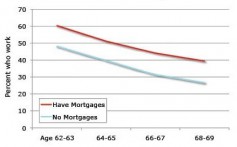Green Is The New Black GreenSource Magazine
Post on: 7 Май, 2015 No Comment

This year promised sweeping changes in the fight against global warming. A just-signed Copenhagen Accord was going to catapult nations into the sustainability stratosphere, as the U.S. launched a new cap-and-trade system. In reality, politicking kept carbon emissions from hitting the Senate floor before summer break, and a lackluster accord has environmentalists pinning their hopes to a Cancun conference in late November.
Based on what you have seen and read about this project, how would you grade it? Use the stars below to indicate your assessment, five stars being the highest rating.
—— Advertising ——
Perhaps ironically, Americans have to look to the private sector for substantive progress toward a greener future. Take Google. Since vowing carbon neutrality in 2007, the search-engine powerhouse has visibly reduced its energy consumptionor, in the case of the company installing photovoltaics at facilities or its commencing a 20-year, 114-megawatt power purchase agreement with wind farmer NextEra Energy Resourcesscrubbing it clean. In the design world, consider Interface, whose sustainability push dates to practically prehistoric 1996, and who intends to achieve zero environmental footprint by 2020. The carpet manufacturers eco-efforts range from boosting the recycled content of its products, to purchasing carbon offsets for company vehicles, and harvesting landfill methane to run a factory.
The real estate industry also has green ambitions. Betsy Boyle, senior manager of the real estate program at Ceres, a Boston-based sustainability advocacy working with capital markets, says those companies have a particular responsibility to embrace sustainability. If were going to reduce carbon emissions 80 percent by 2050, we have to reduce our energy use and switch to clean energy. If 38 to 40 percent of emissions is coming from the building industry, then we have a huge opportunity to mitigate energy use there.
Evoking the work of Interface, developers, construction managers, and real estate services providers are making better buildings as well as embracing sustainability in their company cultures. As the following three cases demonstrate, a sustainability culture means recycling trash and easing off the thermostatand, more substantively, embracing education about sustainability and applying those lessons to every aspect of their jobs. A companys products and services have the biggest impact [on emissions reduction], Boyle says, But youre going to do an exponentially better job if you have an inherently sustainable internal culture.

Get Ready, Get Set:
Tishman Construction Corporation














